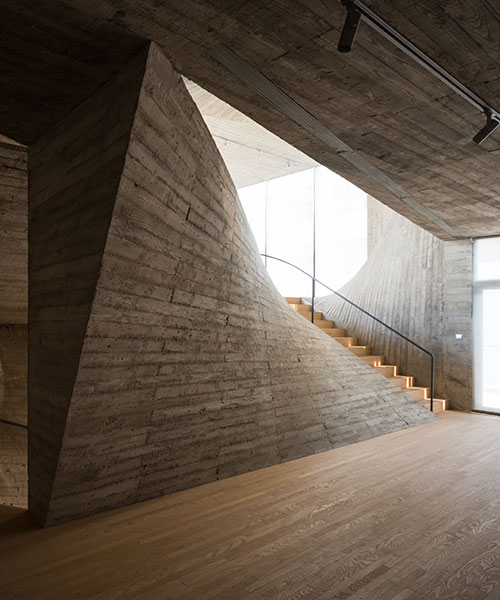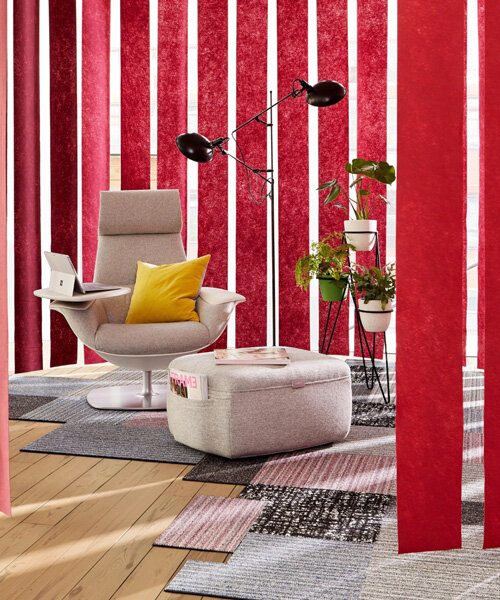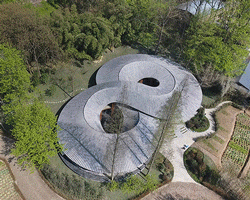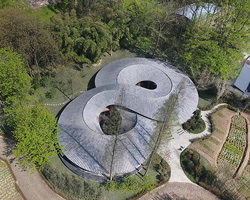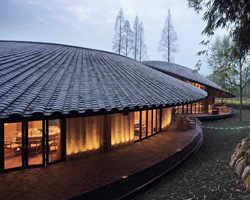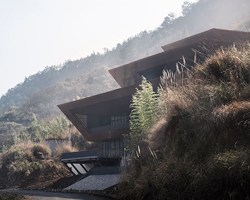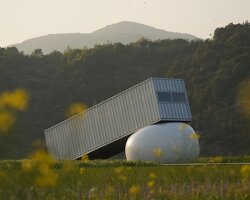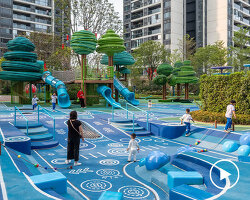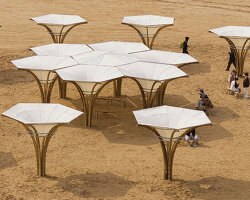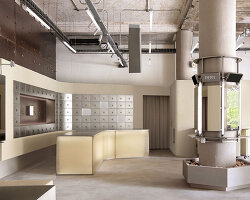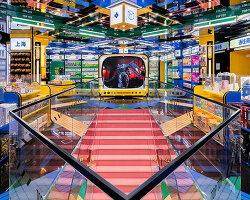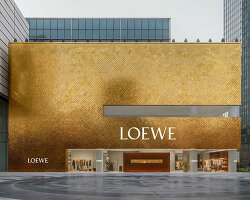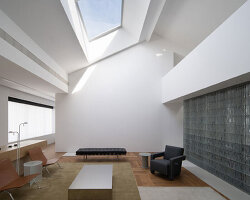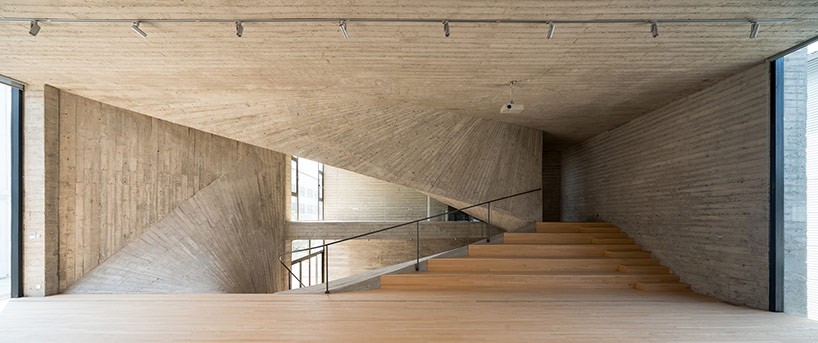
the rapidly developing west bund area of shanghai, china, is set to become one of the bigger art districts in the city- a setting which led local studio archi-union to maximize the floor-area ratio of the modest site while maintaining an architectural expression when designing the fab-union space. the micro-scale reinforced concrete structure is to serve as a future non-profit contemporary art, architecture and cultural communication center with flexible gallery and communication spaces.

image © hao chen (also first image)
in order to maximize the amount of space, archi-union divided the building into the east and west zones. the east contains two floors with a 4.2 meter floor-to-ceiling height while the west contains three floors measuring a more standard 2.8 meters in height. the combination of the floors provides the necessary space to accommodate a range of activities and future exhibits, effectively taking full advantage of the building’s envelope to create a sequence of spaces that break the traditional layouts of exhibit halls.
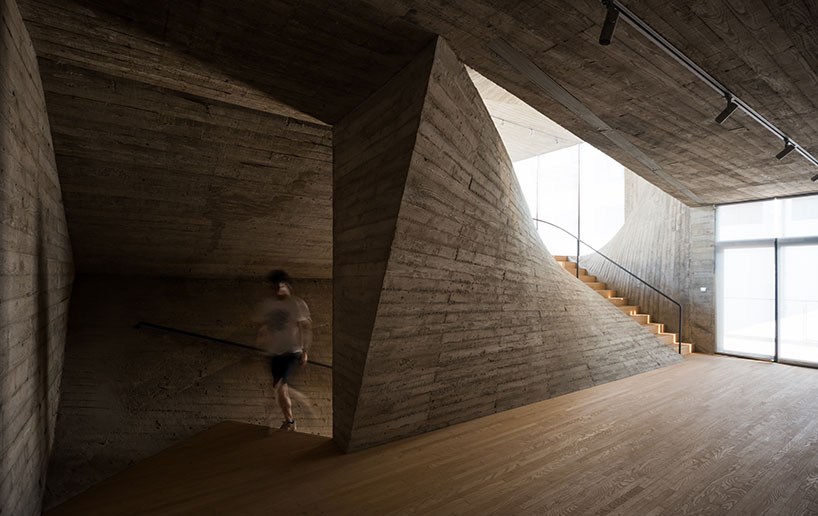
image © hao chen
with two almost disparate halves, the architects sought out a solution to cohesively merge the east and west zones. the solution remained in the circulation, which often times results in a conceptual and aesthetic departure from the rest of the design. for the fab-union space, circulation was treated as an integral and structural component in the building, situated at the center perfectly bisecting the floor plan. the board-formed concrete that supports the timber steps also distributes the gravitational forces of each level, transforming into a parametrically curving column-like feature that becomes a centerpiece design element.
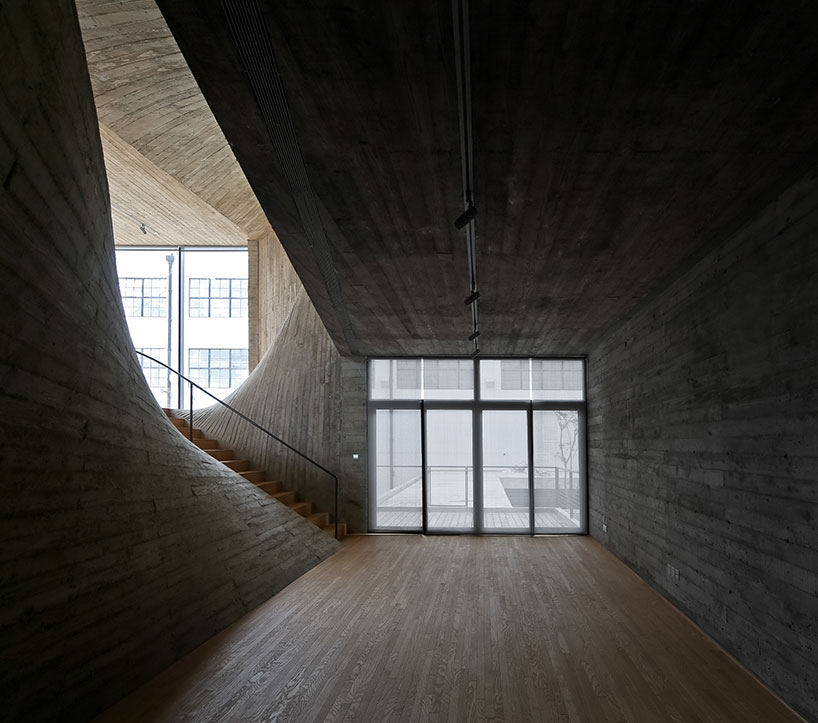
the stairs reveal the difference in level heights
image © shengliang su
orthogonal rooms distort into gentle sinuous walls that transition from one level to the other. natural light flooding in from various skylights and full-height glass walls reveals the intricate textures in the cast-in-place structure and defines the variety of surfaces and edges constantly present throughout the design. shadows smoothly transition into light and visa-versa, at times abruptly cut to an end by a hard edge. the combination of levels allows for the flexibility and quality of space that is necessary for both administrative and public exhibition uses.
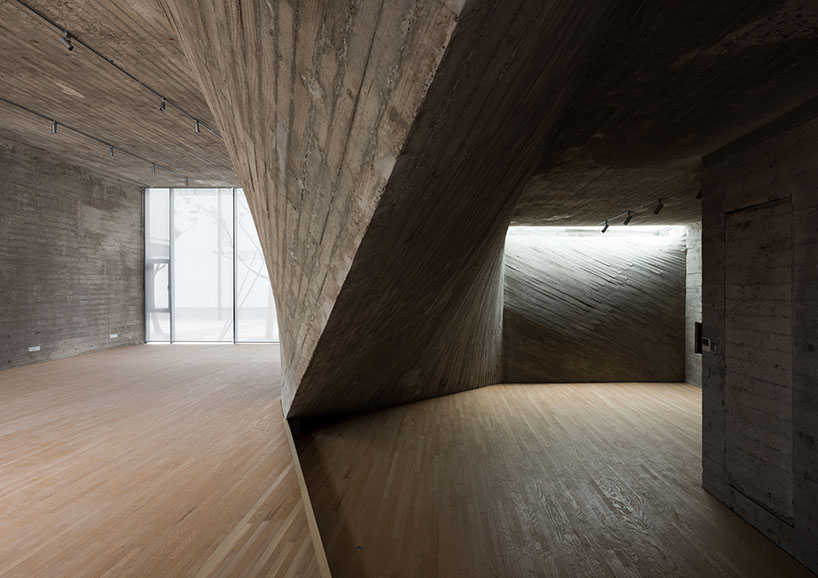
image © hao chen
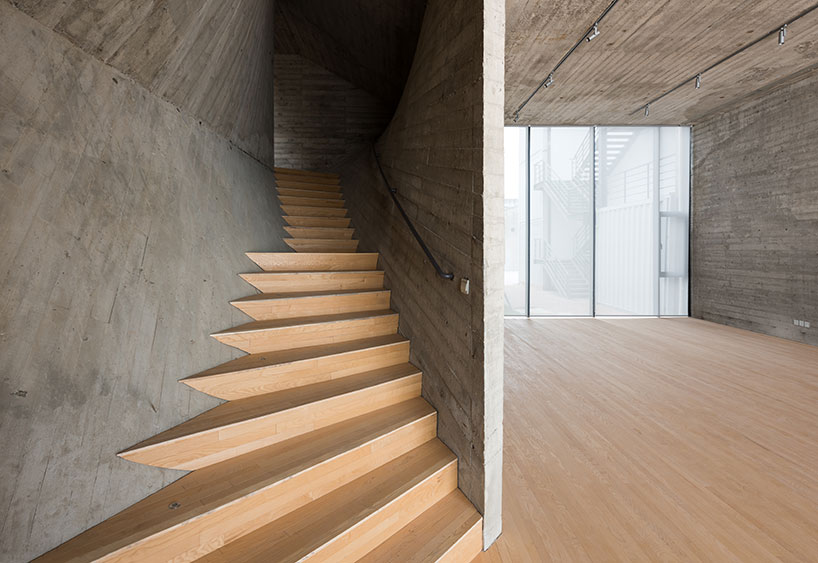
the stairs integrate as part of a structure and not a separate component to the design
image © hao chen
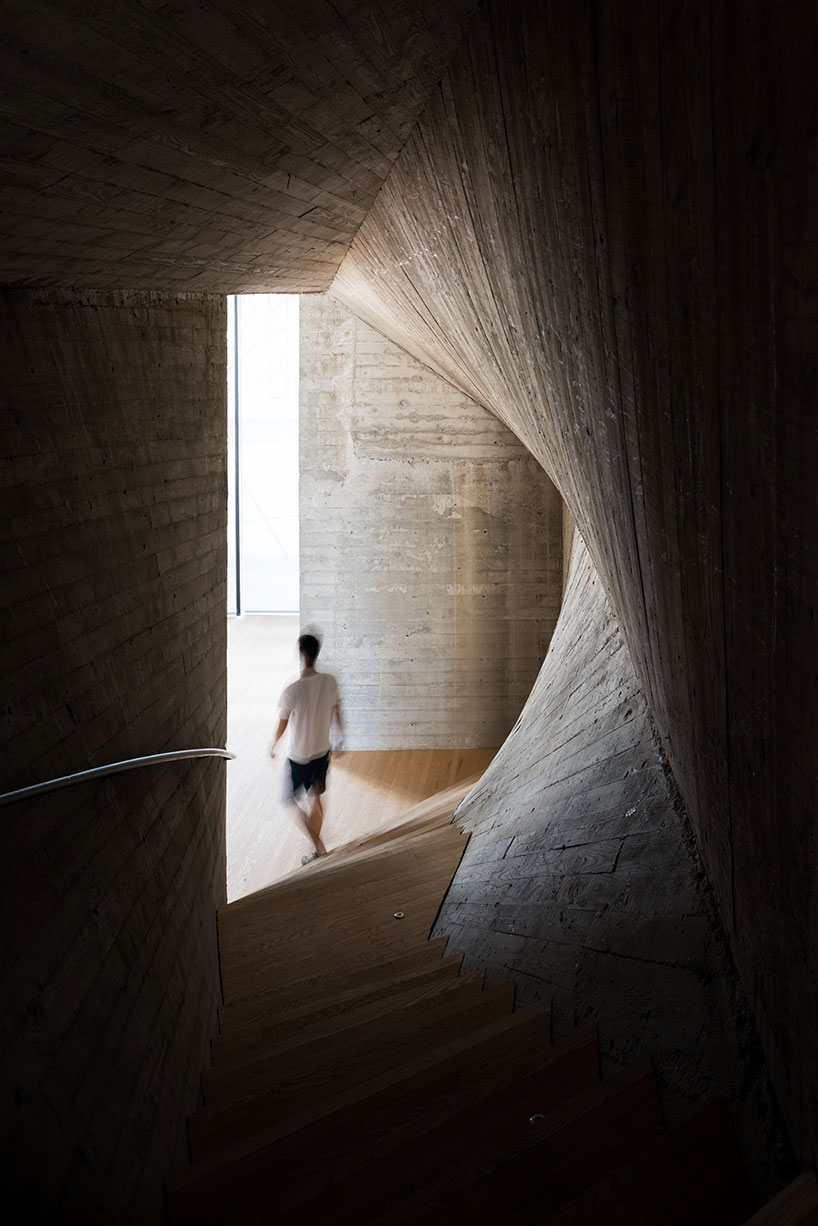
image © hao chen
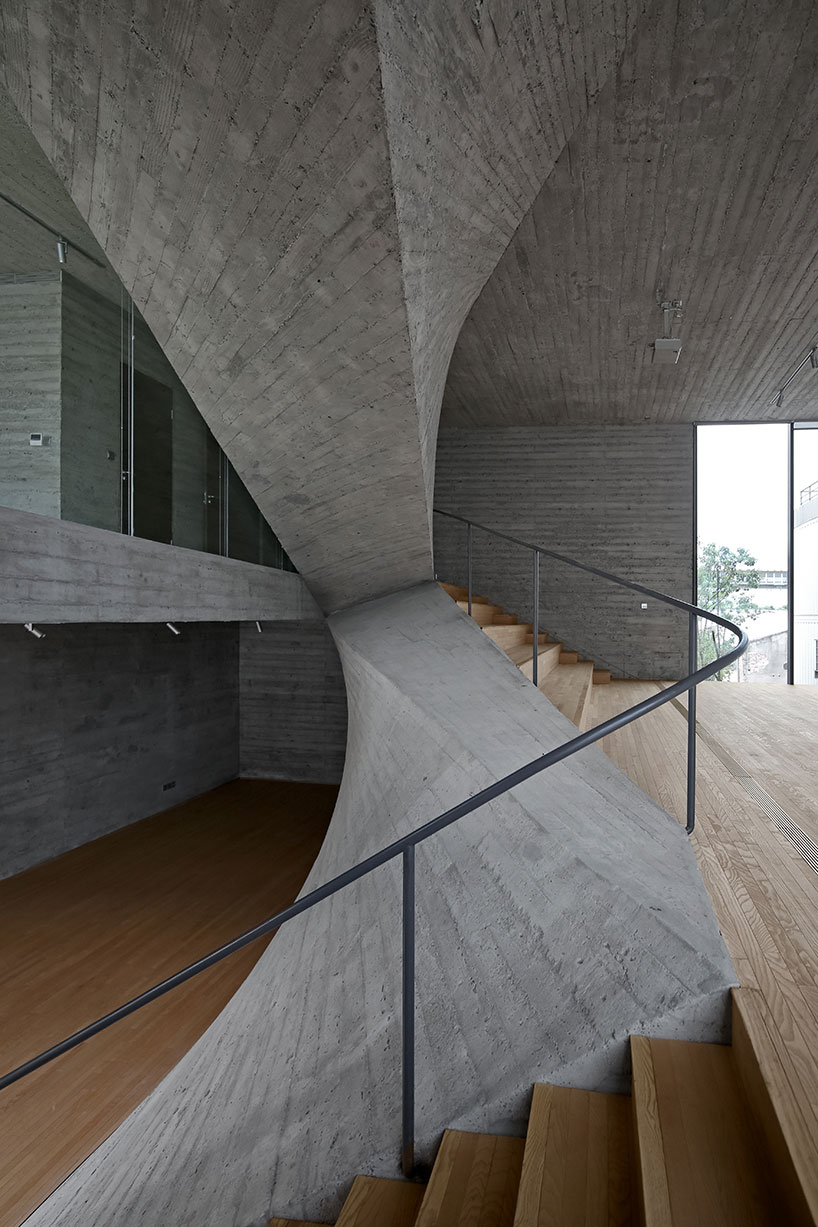
image © shengliang su
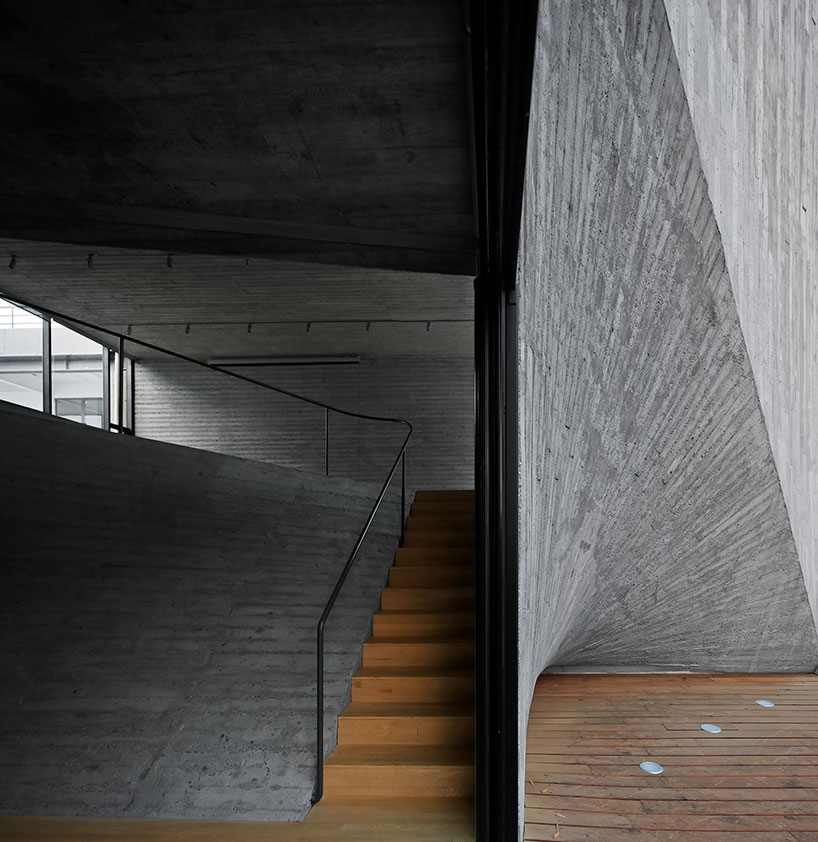
using concrete as a backdrop, every space exhibits a range in light qualities
image © shengliang su
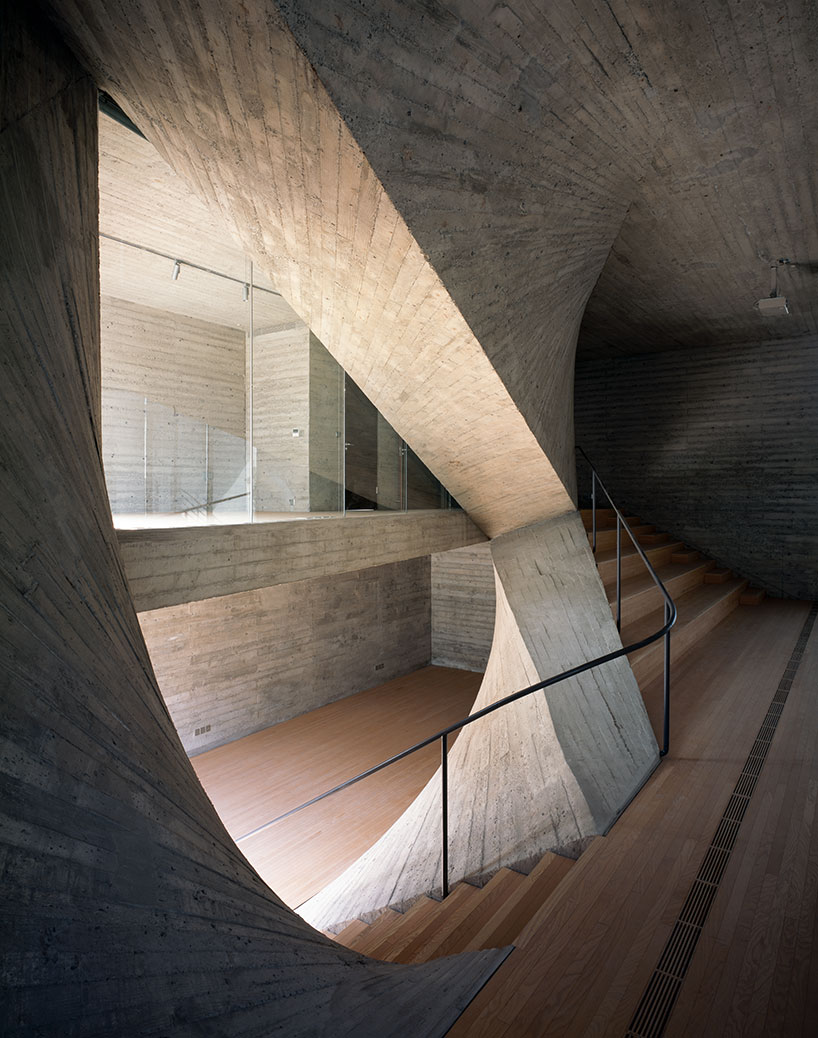
the parametric nature of the stairwell provides the necessary structural support and opens enough to maintain a visual connection between floors
image © hao chen
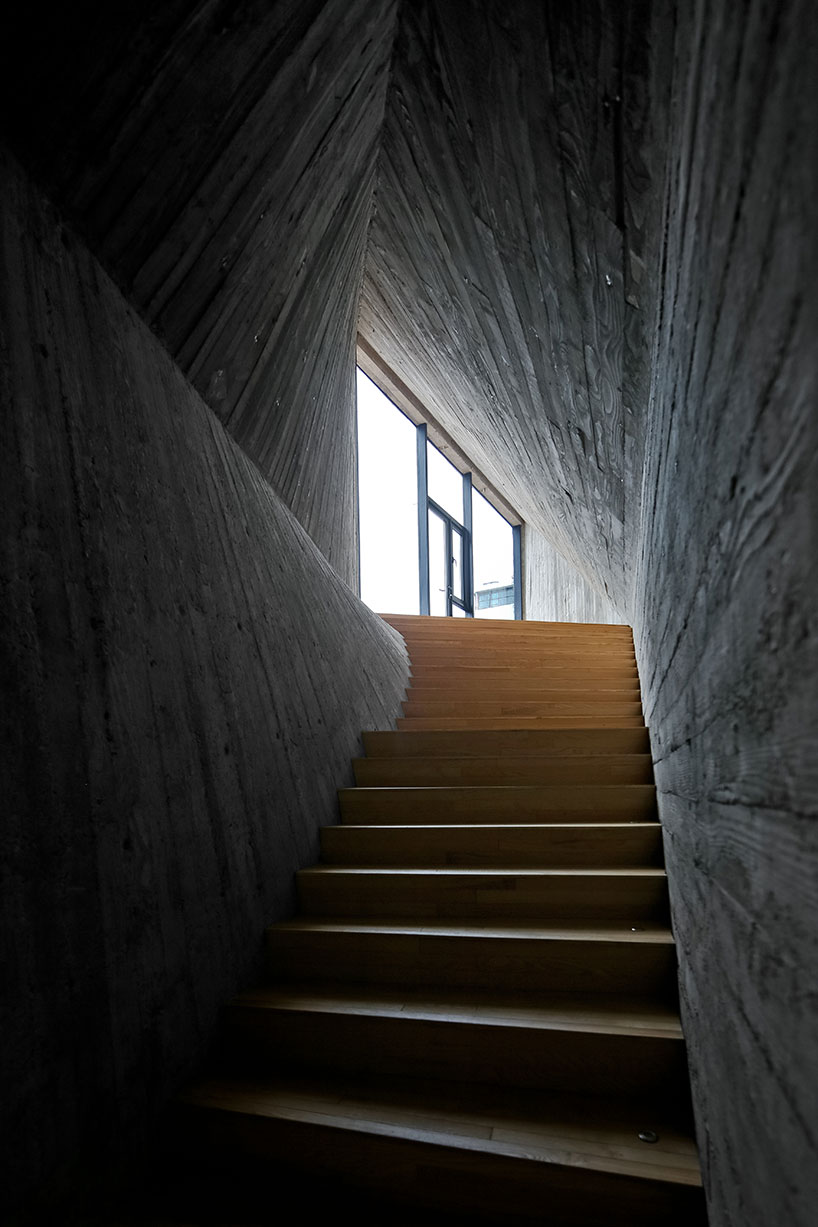
the timber stairs continues the wooden floors, inhabiting the irregular voids left from the curving structure
image © shengliang su
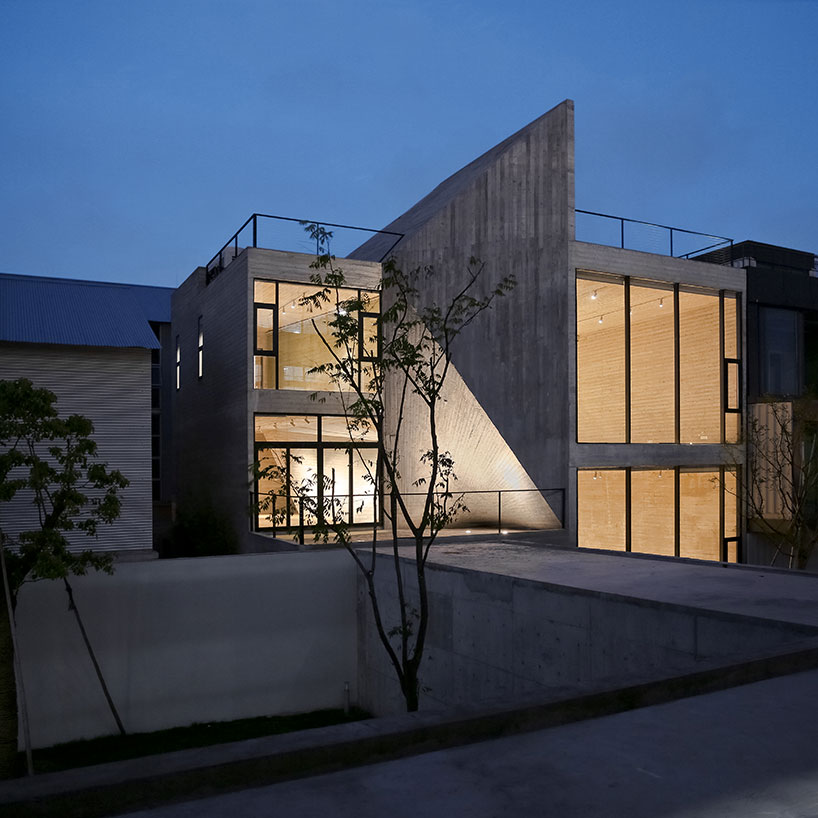
the exterior remains understated, exhibiting the separation of east and west and the simple materials used
image © hao chen
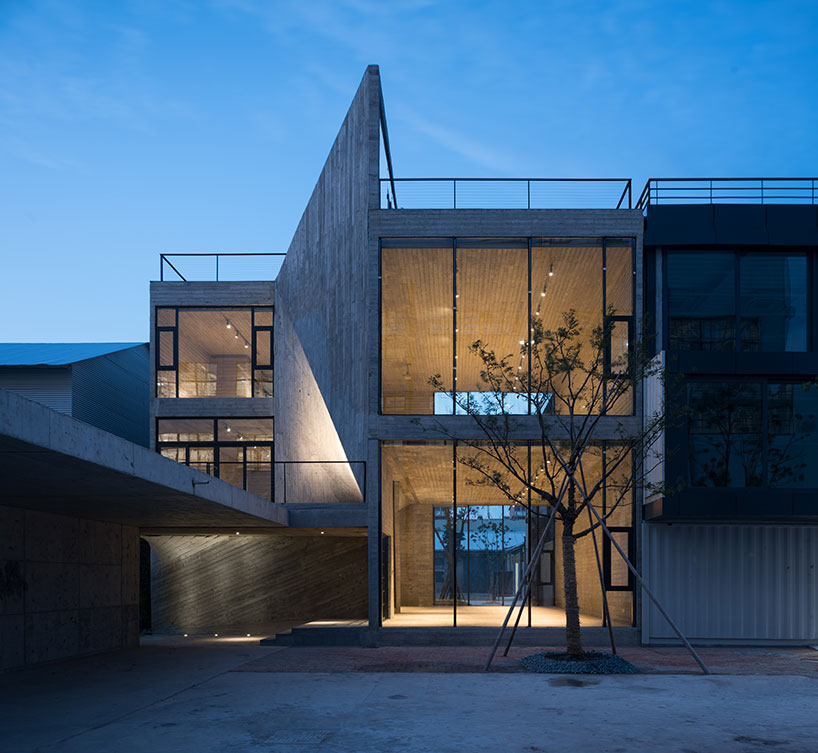
the view from the street provides glimpses into the gallery spaces
image © hao chen
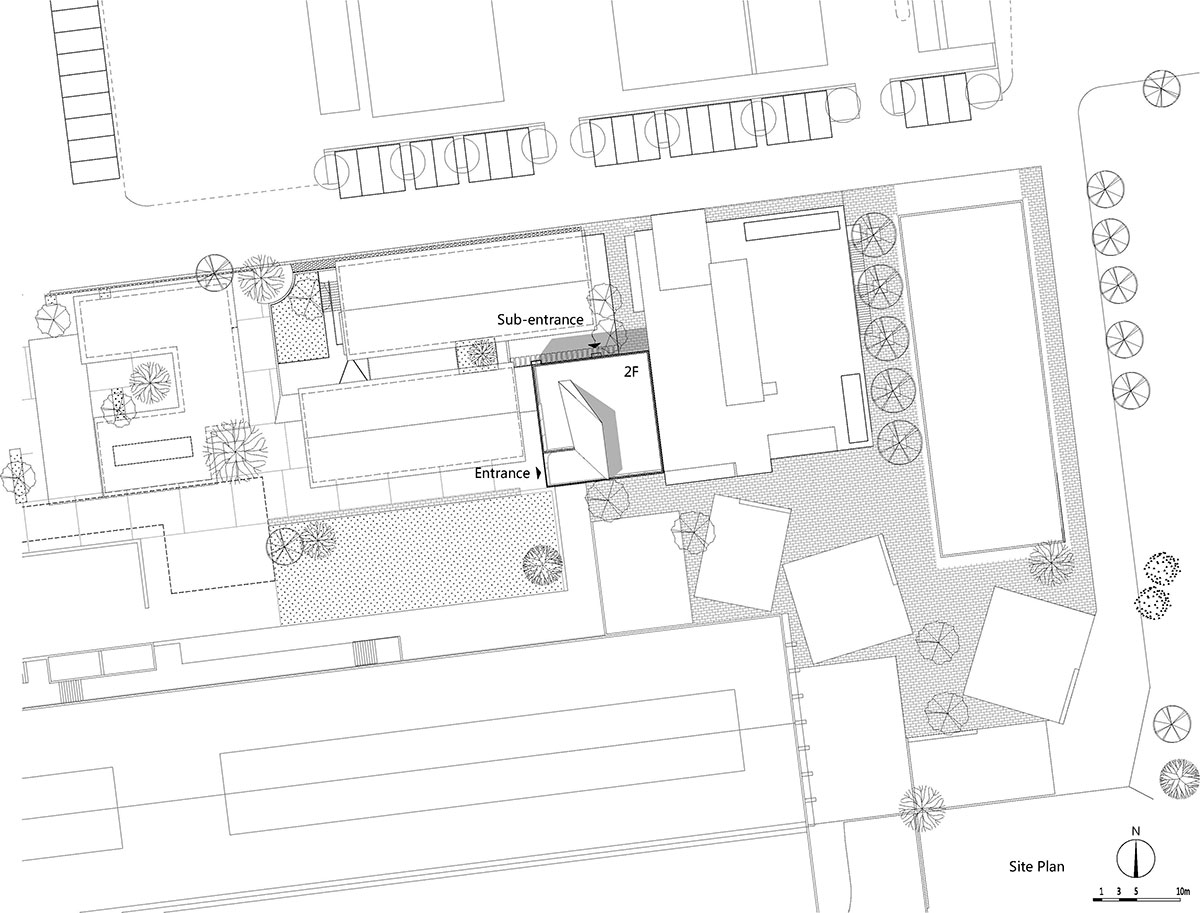
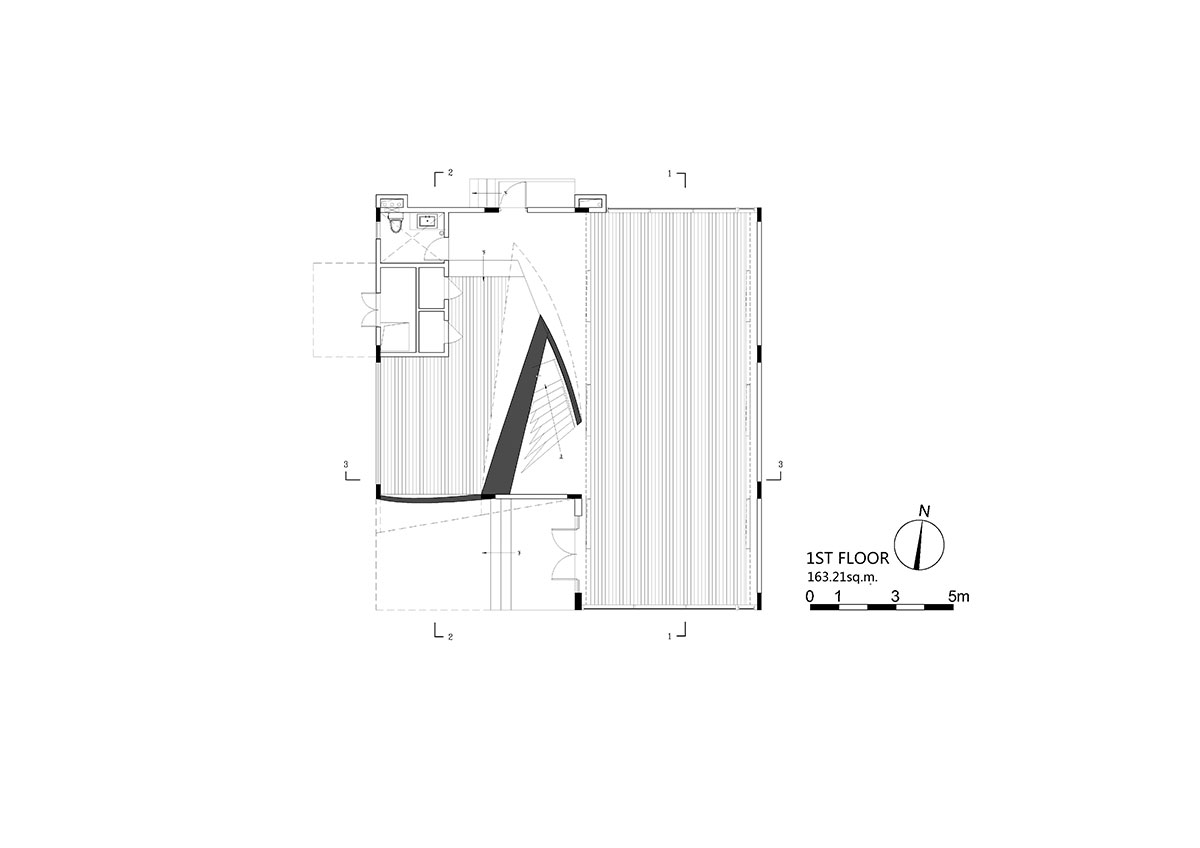
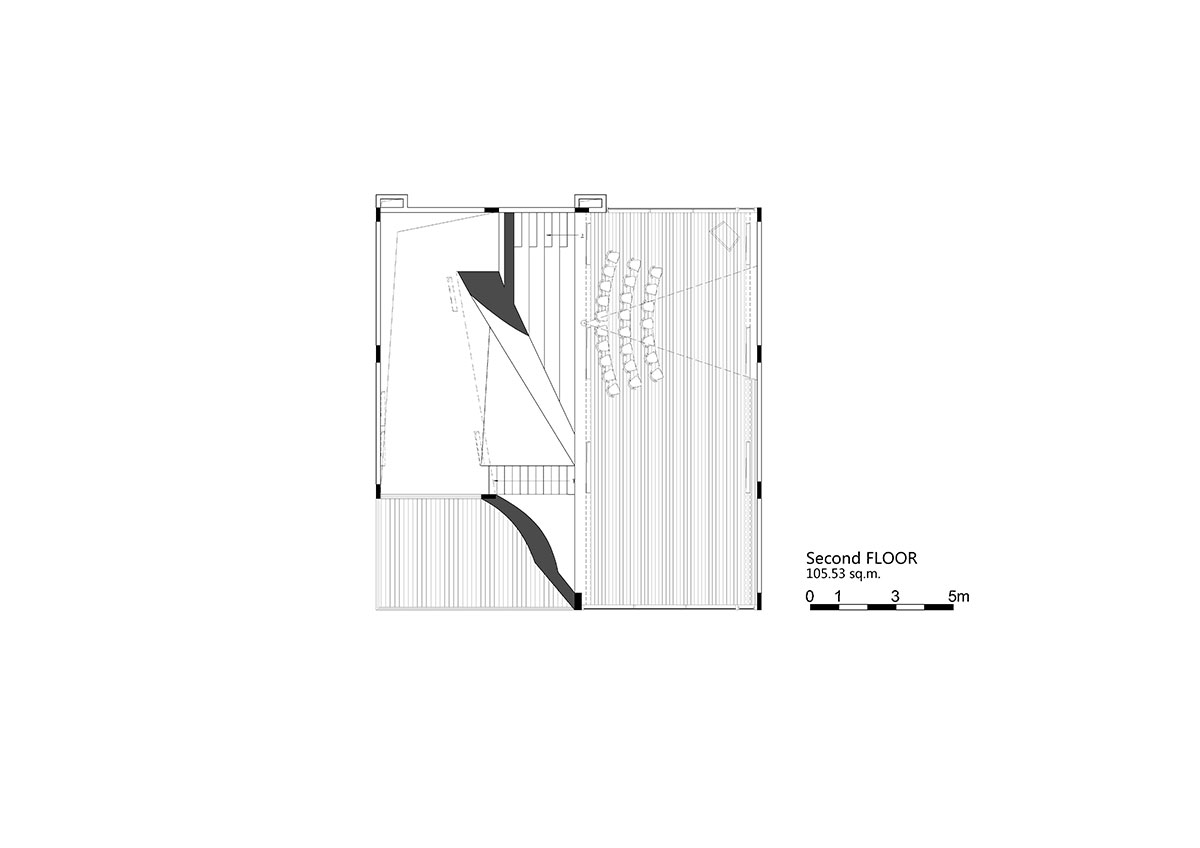
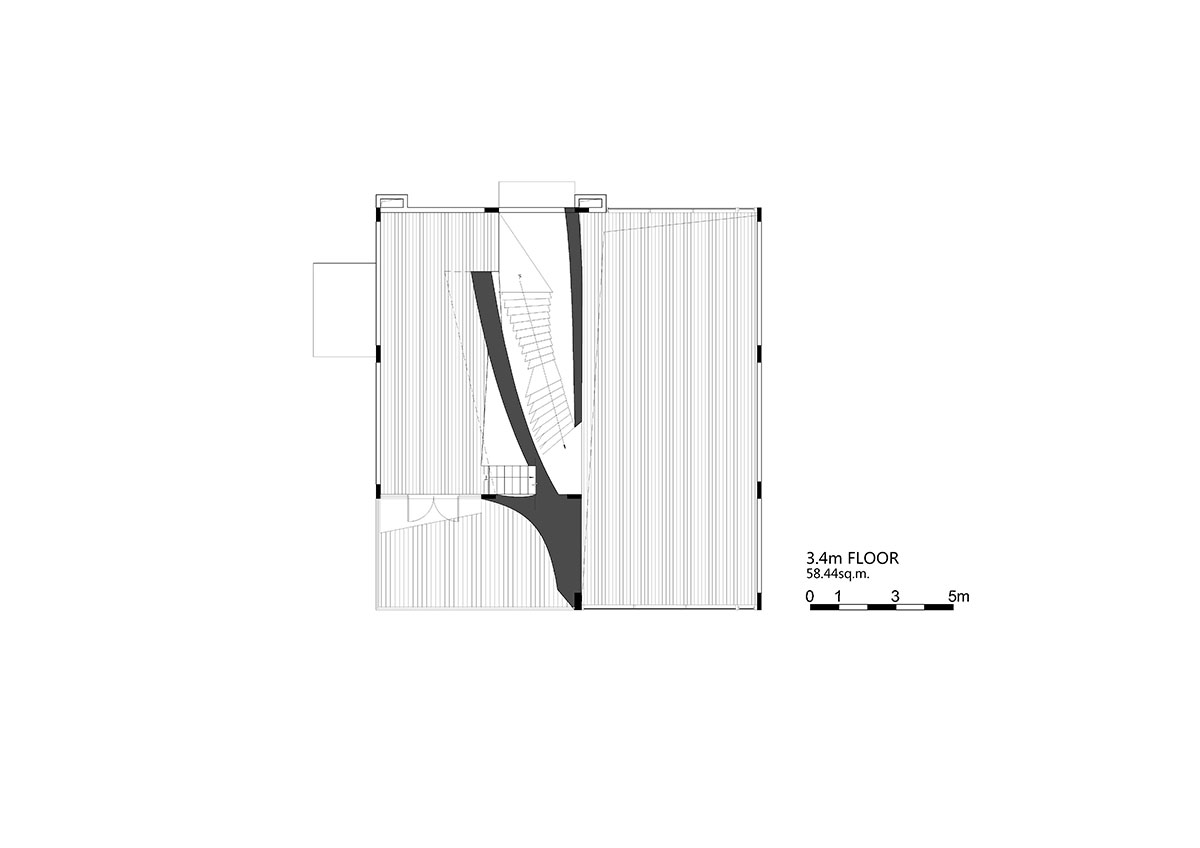
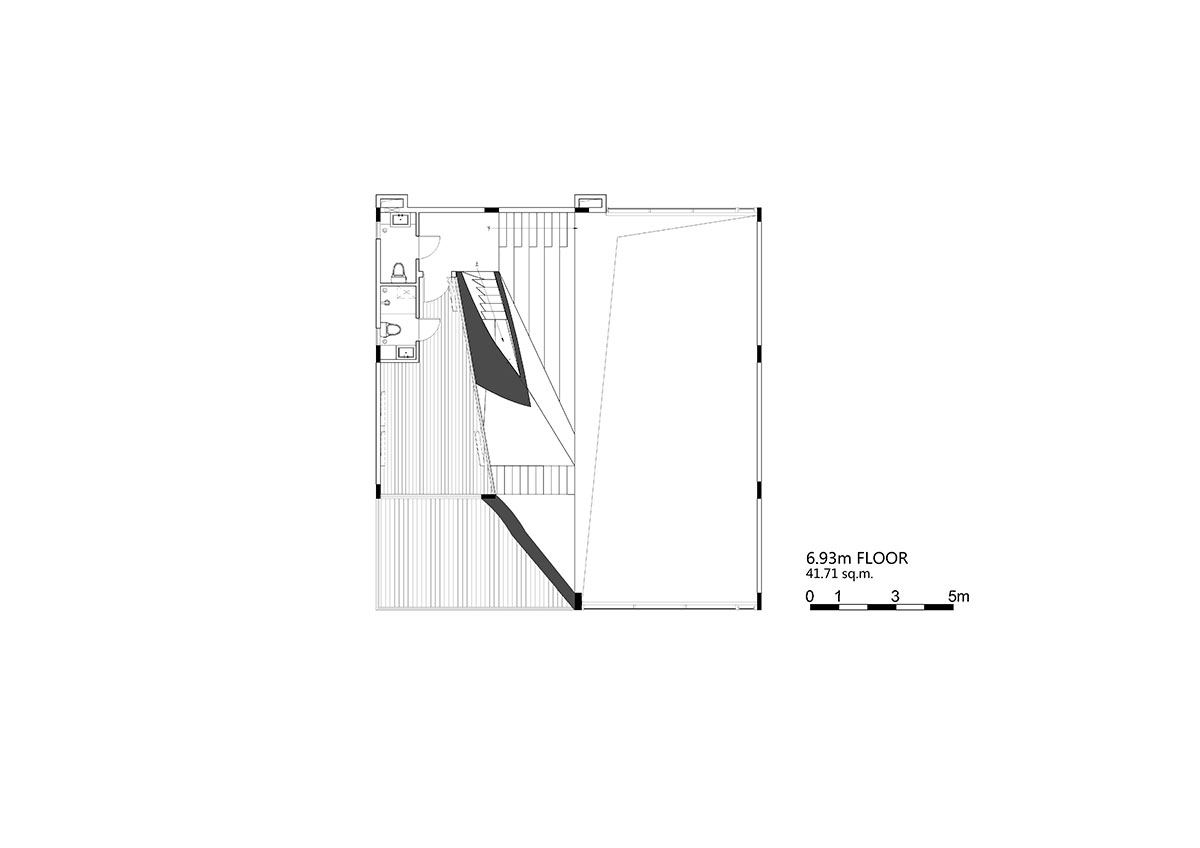
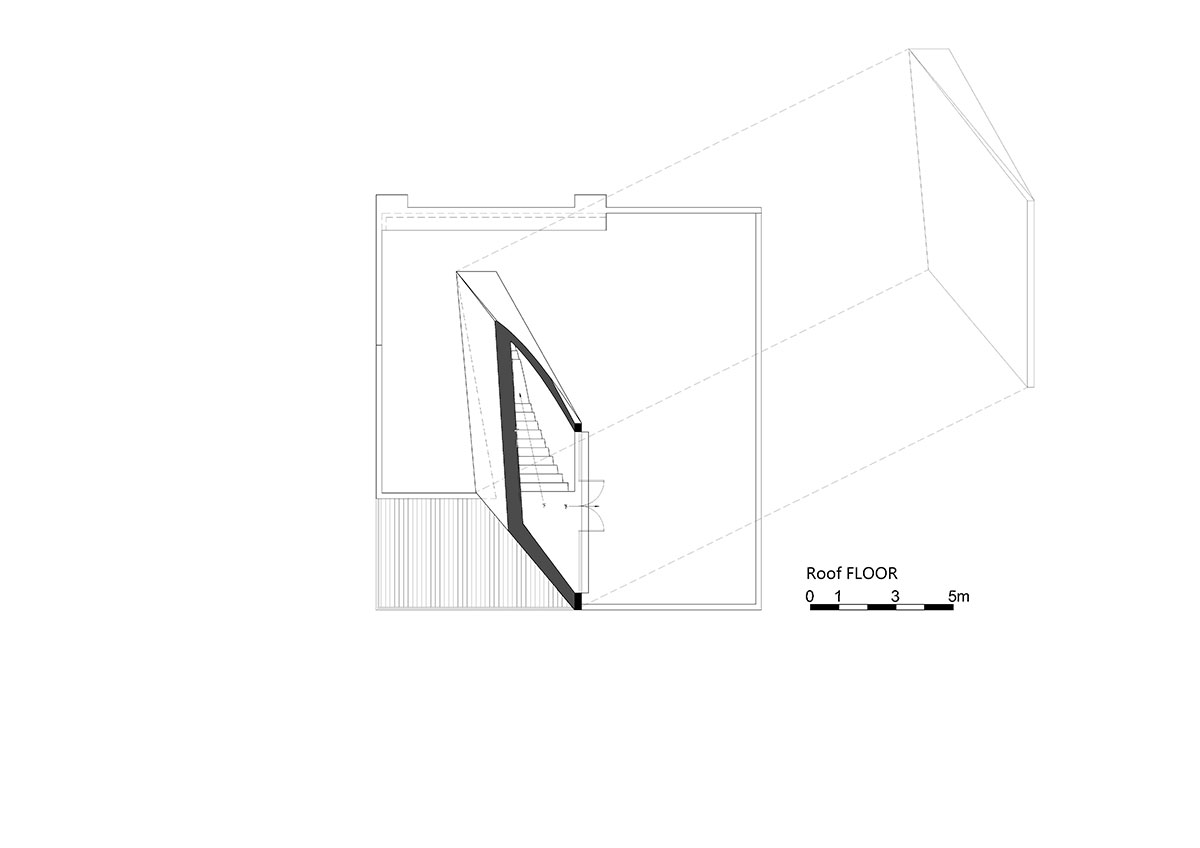
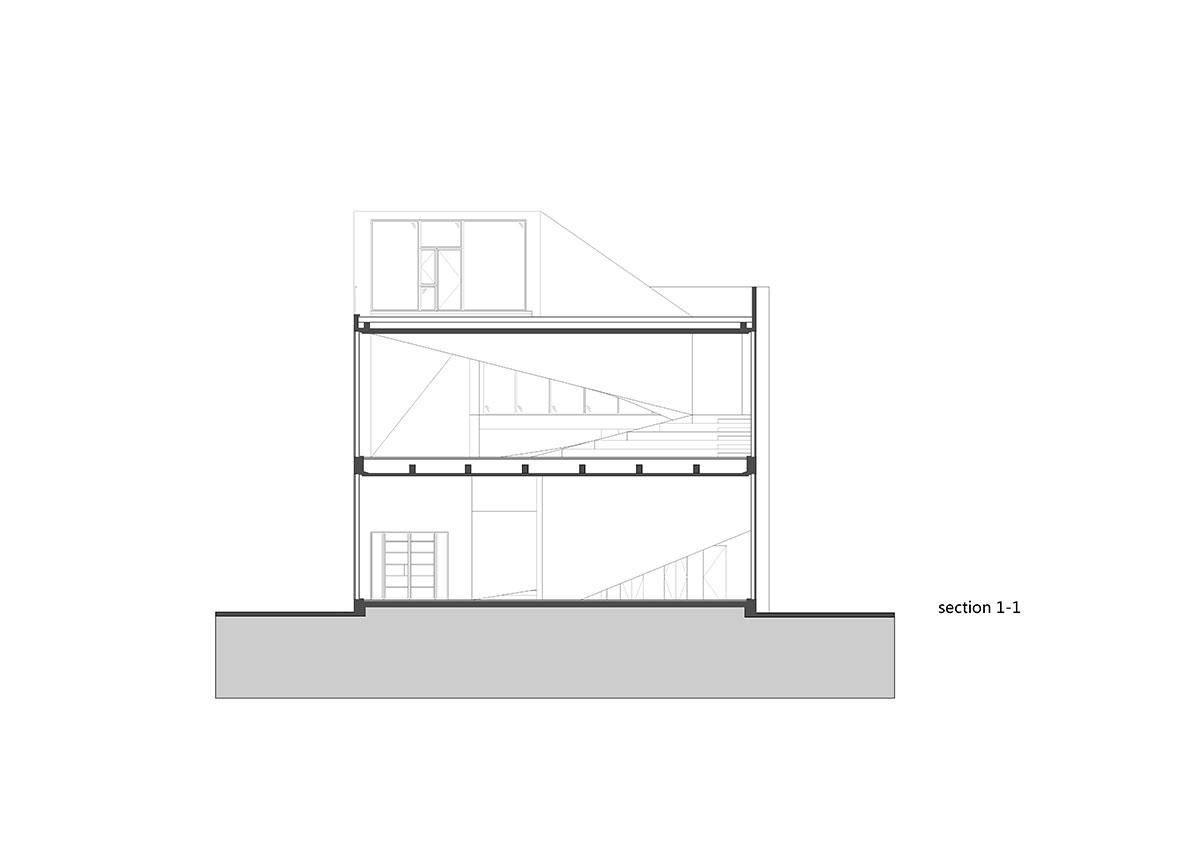
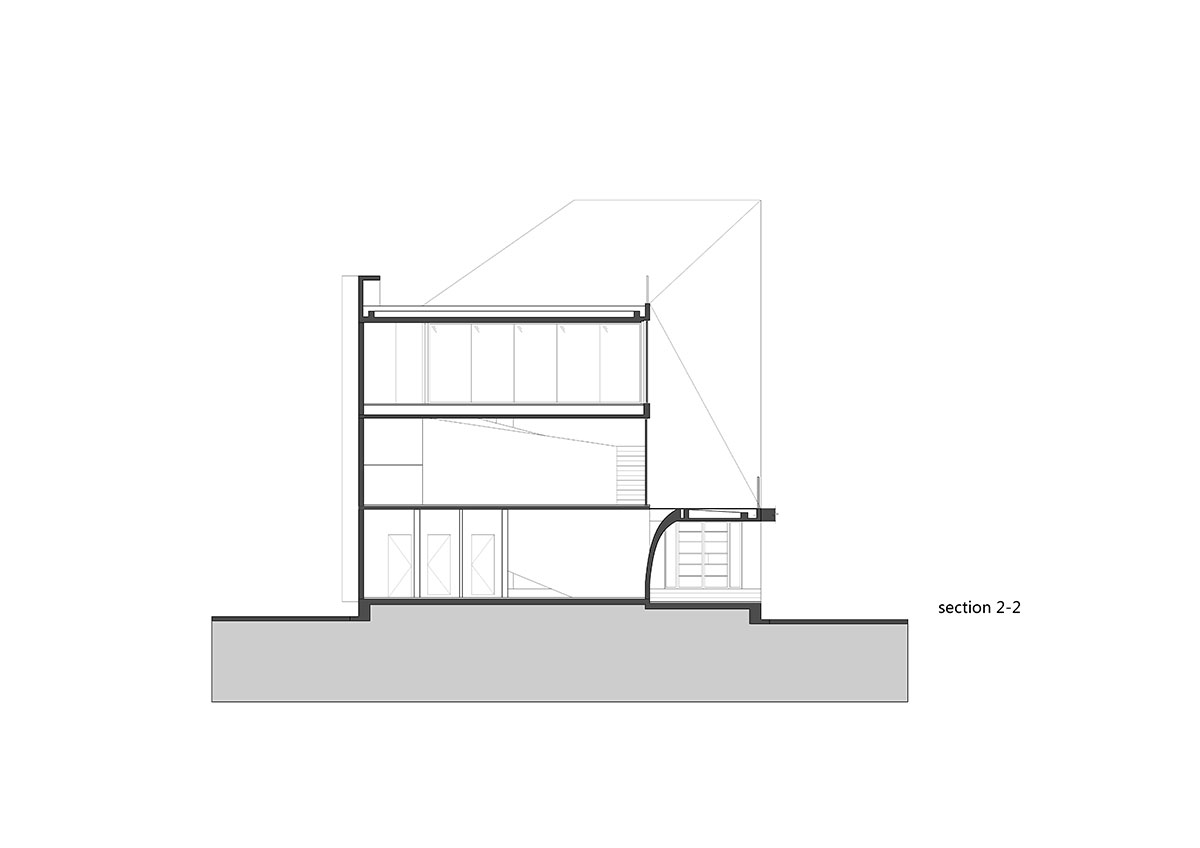
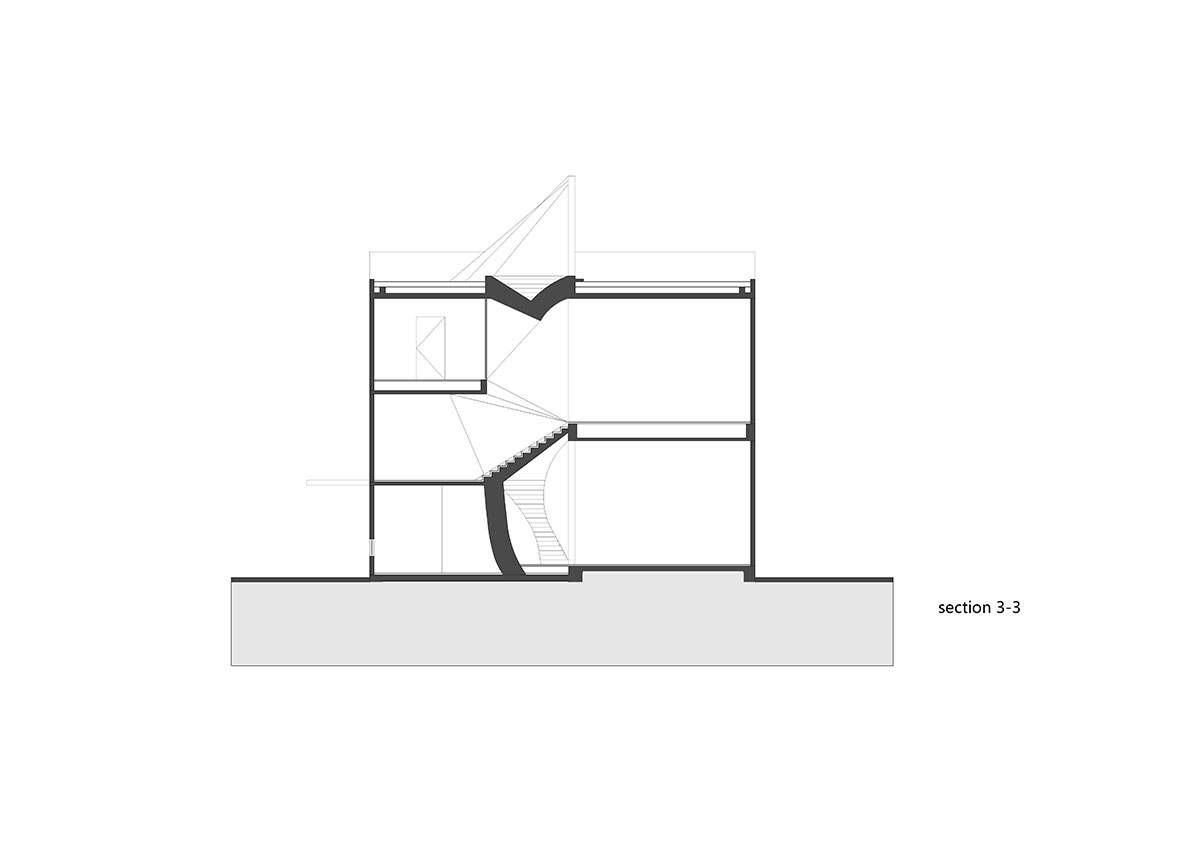
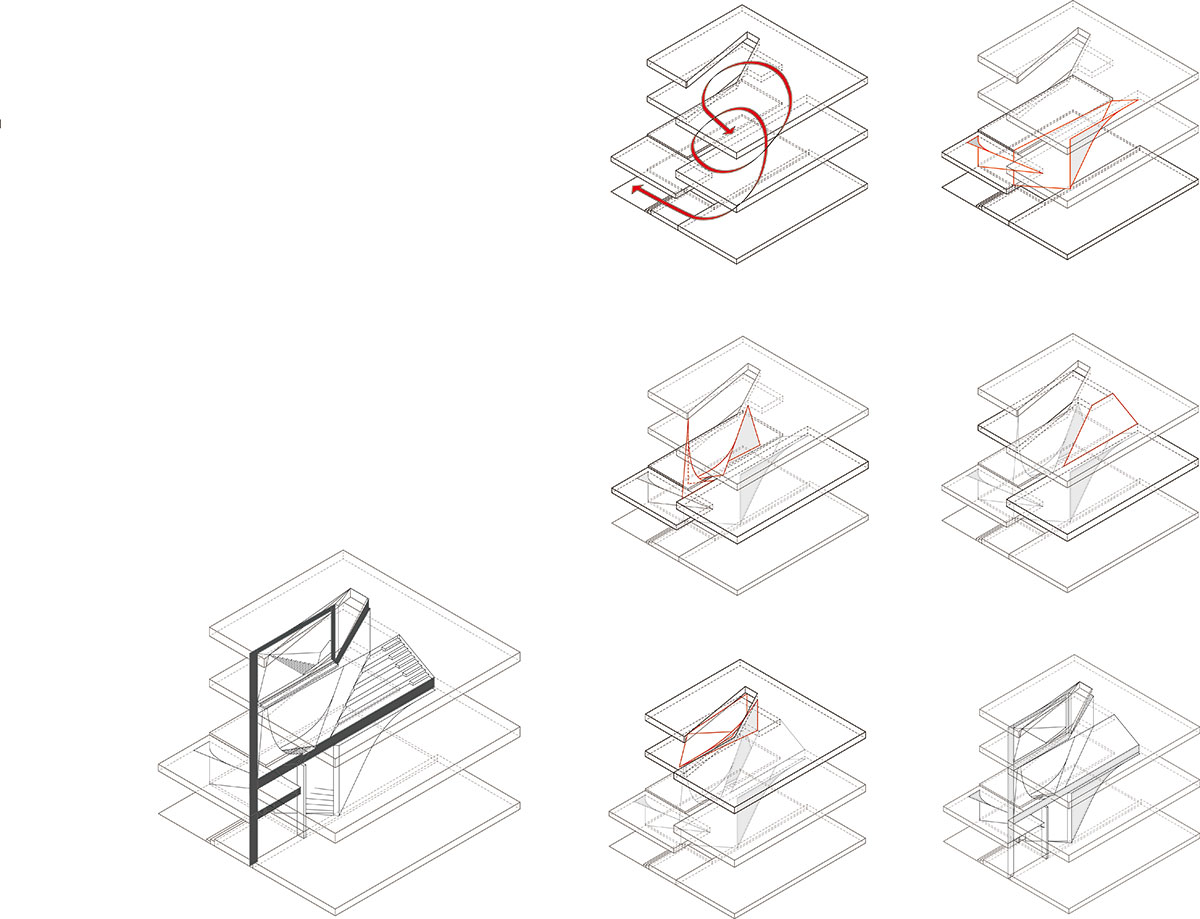
project info:
location: building d, longtengdadao ,xuhui district, shanghai
area: 368 sqm
design/completion: 2015/2015
construction time:2015.06/2015.09
architect: philip f. yuan / archi-union architects
design team: alex han, xiangping kong ,xuwei wang
structural engineer: zhun zhang
lighting consultant: guojian hu, linhua yang
facade consultant: shanghai dimon curtain wall engineering co., ltd
photographers: hao chen, shengliang su
Save
Save
Save
Save
Save
Save
Save
Save
Save
Save
